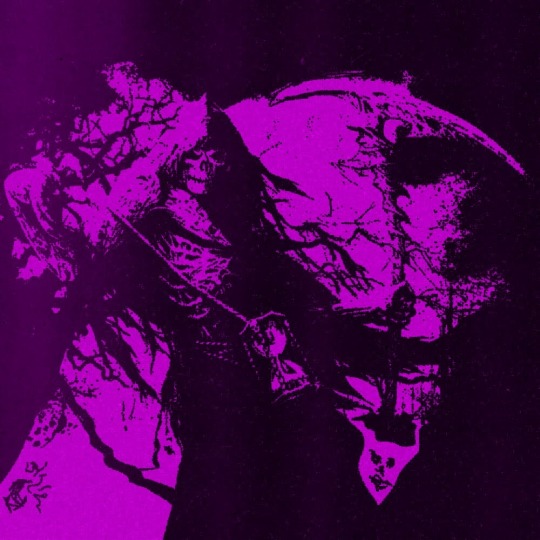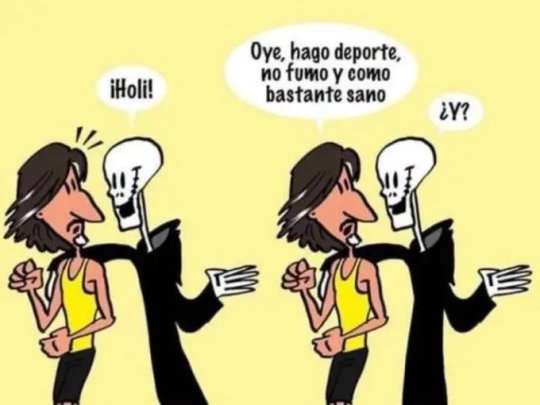#parca
Text

The Parca and the Angel of Death by Gustave Moreau
#gustave moreau#art#symbolism#symbolist#angel#sword#halo#wings#parcae#parca#apocalypse#apocalyptic#pagan#christian#horseman#death#angel of death#four horsemen of the apocalypse#mythology#destiny#the fates#roman religion#roman mythology#christianity#religion#religious#red moon#moon#sun#horse
227 notes
·
View notes
Text

Hoy me dieron ganas de dibujar a una parca abrazando su regalito🐢✨
Por favor, que alguien le siga la historia a Reapertale, amo su lore


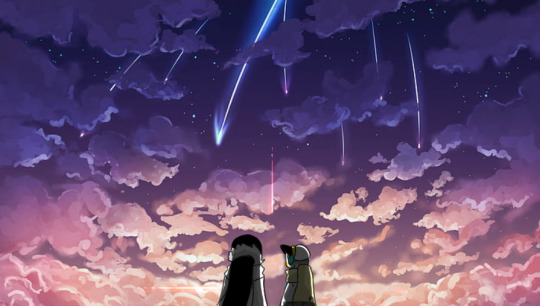
También me animé a hacer un vídeo/edit de mis dibujos con la canción "Night Dance" con palette y Incubux (estos dos últimos por qué los veo Masomenos como desendientes de Nightmare y Dream ya que son igualitos en apariencia, solamente en este video KXBDJS)
Creador de Palette Roller: @angeutblogo / @lasserbatsu
Creador de incubux: @nateeew
56 notes
·
View notes
Text

HAPPY BIRTHDAY ARMS!!!!
#Nintendo ARMS#ARMSiversary#ARMS6#ARM6#ARMSNice#Spring Man#Ribbon Girl#Ninjara#Minmin#Kid Cobra#ARMS OC#ARMS OCs#yeah just tagging the basic charas#Basilisk#Lucha Dora#Therid#Lycan Tormenta#Parca#Pastella#Acrylico#Bucky#and my ocs of course!!!!!!!!!! but thats for my own categorization purposes
80 notes
·
View notes
Text
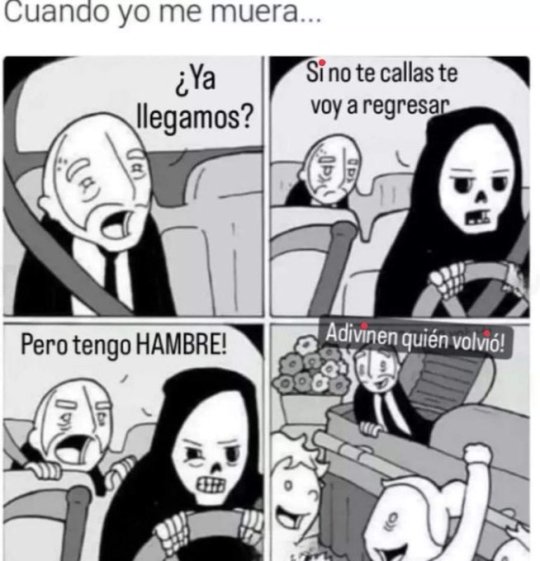
7 notes
·
View notes
Text
"Parca" by Bogotá, Colombia-based darkwave, post-punk, and minimal synth band Climas Interiores off of 2023 release Malestares
#darkwave#minimal synth#postpunk#electronic post punk#Climas Interiores#Parca#Malestares#music#Colombian#South American#2023#Bogotá Colombia#Bandcamp
13 notes
·
View notes
Text
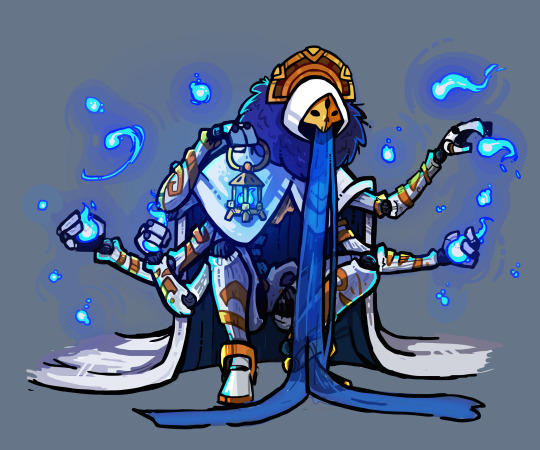
12 notes
·
View notes
Text
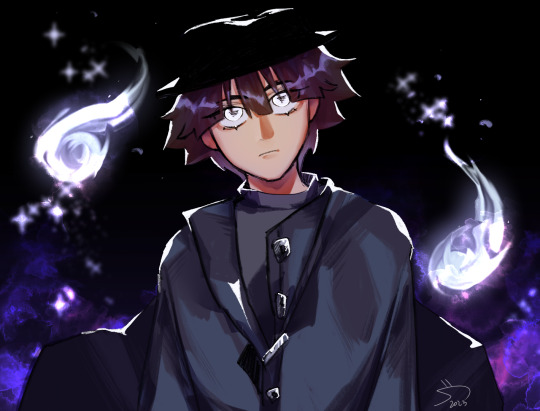
𝓓𝓮𝓼𝓽𝓲𝓷𝓸 - 𝓛𝓪 𝓜𝓸𝓻𝓽𝓪
3 notes
·
View notes
Text
Y cuando pienso que estoy haciendo las paces con la muerte, llega y me arrebata a mis seres queridos, como si nada importara, como si pudiera seguir levantándome.
#amor#duelo#frases#pensamientos#citas#sentimientos#notas#frases de amor#citas de amor#desamor#sweet-wishes#pena#tristeza#dolor#vida#muerte#parca
2 notes
·
View notes
Text

Owner/artist: mahoukarp
#cute guys 12#kawaii#death#muerte#parca#art#arte#kawaii art#twitter#halloween#h22#noche de brujas#2022#spooky season 2022#aww 2#cute 2#curaditos#ghost#fantasma#afterlife#más allá
4 notes
·
View notes
Text
Deadly fall: The Parcae
THE PARCAE
Category: Roman mythology
In Roman mythology, the Parcae (plural of “Parca”) are the three goddesses embodying destiny – it is their will that decides the shapes and events of the life of both mortals and immortals (gods and humans). They do not decide the individual actions of people, there is still a form of free will, but they decide important events of life: when someone is born, when someone dies, or if someone is destined to partake in a great war… The gods fear and respect them, and none have power over the Parcae – not even Jove/Jupiter, king of the gods, is just an herald and servant to the Parcae’s decrees. No one can change their decisions, no amount of prayer can make the Parcae change their will, and what they did can never be undone. They are described as weaving sisters who manipulate the literal “threads of life”.
Originally, the Romans only had one goddess of fate, “Parca Maurtia”, who worked close alongside a goddess of birth known as “Neuna Fata”. But this duo would become a trio when the Romans discovered the Greek Moirae, and decided to reuse them for their own mythology.
The first of the three Parcae is Nona, an adaptation of Neuna Fata. She was the Parca who “spins the thread from her distaff onto the spindle”: understand, she takes care of birth and the beginning of life. It was said that she appeared most notably during the “dies lustricus”. This “day of lustration” or “purification day” was the naming ceremony of a Roman baby: it happened nine days after a boy’s birth, but eight after a girl’s birth (because Romans believed girls aged and matured faster). By receiving a name, the child was identified as its very own individual, part of the family yet detached from its mother, and by extension it became deserving of its own fate: on the dies lustricus, Nona would appear and determine the child’s lifespan. It was so important that the ceremony of writing the new name of the baby was called “Fata Scribunda”, “The Written Fate”. She was called Nona, the “ninth”, because she also acted as a goddess of pregnancy: mothers called upon her during the ninth month of their pregnancy, when birth was to be due.
The second of the Parcae is Decima, whose role is to “measure the thread of life with her rod”. She sometimes gets confused with Nona when it comes to determining the lifespan, as sometimes people with short lives are said to have been “ill-gifted” by her. Generally poor Decima has little personality to herself as she was created to fill the gap between the other two, to match the “three goddesses” pattern. We can theorize that, like her Greek equivalent, her role might have been to give people good and bad things across their life.
The last of the Parcae is Morta, the “iron-hearted” sister, whose job is to “cut the thread of life”: she is an adaptation of Parca Maurtia, and she is an entity of death. It was believed she was the one who decided the way a human would die, and was often associated with stillborn infants. No one can die until she cut their thread: in fact, in Statius’ Thebaid, the story is told of how a living man accidentally ended up falling into the underworld, and yet did not die since the Parcae hadn’t cut his thread – and similarly, characters in Roman theater could sometime say that their life had been prolonged by Morta out of pity: “white-robed Morta” can promise to those she likes the gift of old age.
Mind you, these different functions were not always clearly cut, as poets and writers liked to depict them as all three being spinsters with distaffs, instead of just Nona, while others claimed that on a man’s day of death, the three “harsh sisters” came, with no postponing of the meeting and no one being able to not answer their call. Daughters of Nox (the Night) and Erebus (Darkness), living in the underworld alongside ghosts and chthonian deities, Mors (the Roman equivalent of Thanatos, and by extension the Parcae’s brother) is usually depicted as their helper or assistants: when it isn’t Morta who cuts or tears apart the thread of life, it is Mors who does so with his sword – and when Hercules manages to subdue Mors (the myth of Herakles vanquishing Thanatos), it is described as him “stretching the wool on the distaff of the Parcae”. In their abode, they engrave in steel and bronze the fate of the entire world, the destiny of each individual, mortal or immortal – and no one and nothing can erase or destroy those archives, not even Jove’s own lightning. According to Ovid, they were the ones who established the law according to which any person who eats the food of the underworld would be forced to stay forever among the dead, and according to Statius, when Orpheus managed to bring back Eurydice from the world of the dead, it was the Parcae’s task to accompany her in order to “repeat their task” of giving her a new life.
In art, a classical iconography was formed over them. The Parcae were usually depicted with a form of headgear, be it a crown of gold, a crown of oak branches, or even a veil over their head. The Romans usually invoked the Parcae alongside Apollo, as both were “seers” and deities able to see into the future: they were also given the sacrifice of black sheep, the same types of animal killed for the Furies (the Roman version of the Erynies, a monstrous trio of goddesses of revenge and punition, who were said to dwell alongside the Parcae in the Underworld – a description of it even claims that the Furies sit by one side of the throne of the ruler of the underworld, while the Parcae sit by another).
- -- - -
Also called the “Black Sisters” (in their grim and darkest form), the “Triple Goddesses” or the “Elysian Sisters” (for some believed they could grant the prayers of the souls reaching the Elysian Fields), the Parcae took part in numerous myths – some inherited from Greek mythology, others entirely invented by Roman authors. In many of these myths the Parcae notably act as prophets for the gods.
# Ovid recalls a unique myth in which, during the Titanomachia (the war between the Titans and the Olympians), the Parcae warned Styx (the goddess of the underworld river, and an ally of Jupiter) that Saturn (Kronos) had found a monster born out of Terra (Gaia), half-bull in the front, half-snake in the back. Anyone who would take out the guts of the creature and burn them in a fire would be destined to vanquish the Olympians: to avoid that, Styx snatched the monster away from Saturn and locked it up in a “black grove” behind a “triple-wall”.
# In Ovid’s version of the myth of Phaeton, the Parcae warned Jove one day by giving him a prophecy according to which the day when the land, the sea and the heaven would burn in flames, would be the day when the world could potentially be destroyed. When Phaeton loses control of the chariot of the Sun his father and scorches the world, Jove understands that the prophecy is about to be realized, prompting him to kill Phaeton.
# When the great hero Meleager was born, the Parcae appeared: Nona said he would be noble, Decima that he would be brave, but Morta, looking at a brand burning in the hearth, said he would live as long as it took for the brand to be consumed. Meleager’s mother took away the piece of wood from the fire and kept it protected in a chest for many years, until her son was adult… But after a series of disastrous events in which Meleager killed his own uncle, his mother’s brother, she was so struck by grief she threw the piece of wood in the fireplace, in which it burned: and Meleager burned like the brand his life was attached to.
# They were the ones who prophesized that Thetis’ son would be greater than his father, prompting the gods who lusted after her to marry her to a mortal king – giving birth to the great hero Achilles.
# According to Pseudo-Hyginus, all those that managed to escape from the realm of the dead did so only because the Parcae agreed for it to be: Ceres in her quest for her daughter Prosperpina, Liber Pater (Dionysos) when he rescued his mother Semele, Hercules when he brought up Cerberus, Asclepius when he became a god, Mercure (Hermes) who acts as a traveler between the world of the dead and the living, and Castor, Pollux, Leda… All had to get a specific permission from the Parcae.
# Finally, Ovid wrote that when Chiron was infected by an agonizing and painful poison but could not die due to being immortal, he begged the gods to relieve him and they agreed to have the Parcae “unloose the threads” of his fate and “putting him in death power”: the sisters-goddesses took back his immortality and allowed him to die.
3 notes
·
View notes
Text
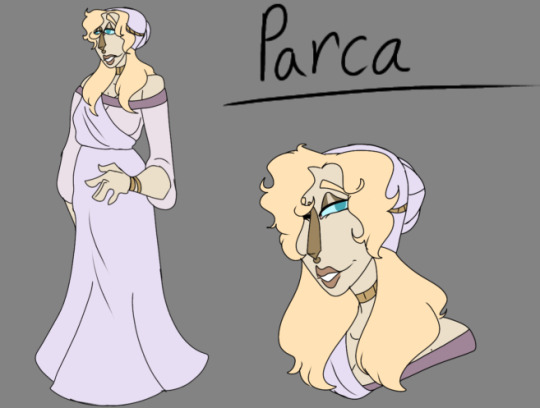
Parca
(Stuff about Parca⬇)
Parca is the middle sister of the trio.
She's most lively out the three.
Parca is very talkative and very loud at times.
Parca actually has a son whose father is a maker (imagine that 0 >0)
Parca son's name is Aegir.
She's very much is in love with Aegir father Hjalmar. (My excuse to make a maker oc lol)
She does live in the makers realm after the council tried to kill her.
Parca doesn't like the horsemen due to the Charred Council.
2 notes
·
View notes
Text
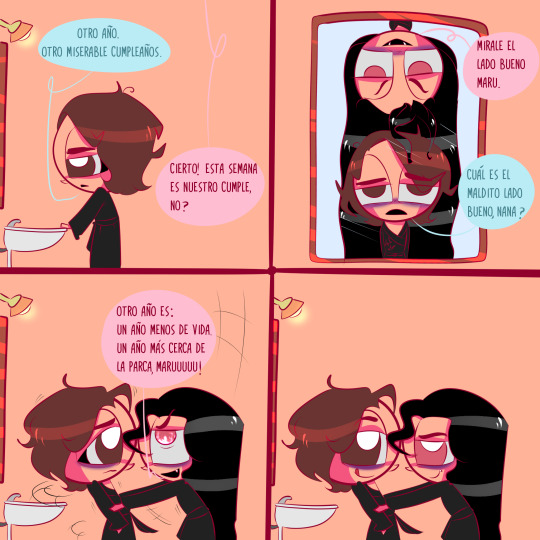
Cumpleaños
#las variables de maru#maru#nana#viñeta#humor#dibujo#digital art#art#my art#oc#dibujante#ilustracion#illustration#ilustradora#artista#cartoonist#cumpleaños#muerte#parca#argentina#buenos aires#lunes#mayo
3 notes
·
View notes
Text

I LOVE MY OCS!!!!!!!!!!!!! 💀🪅🐓

49 notes
·
View notes
Text
1 note
·
View note
